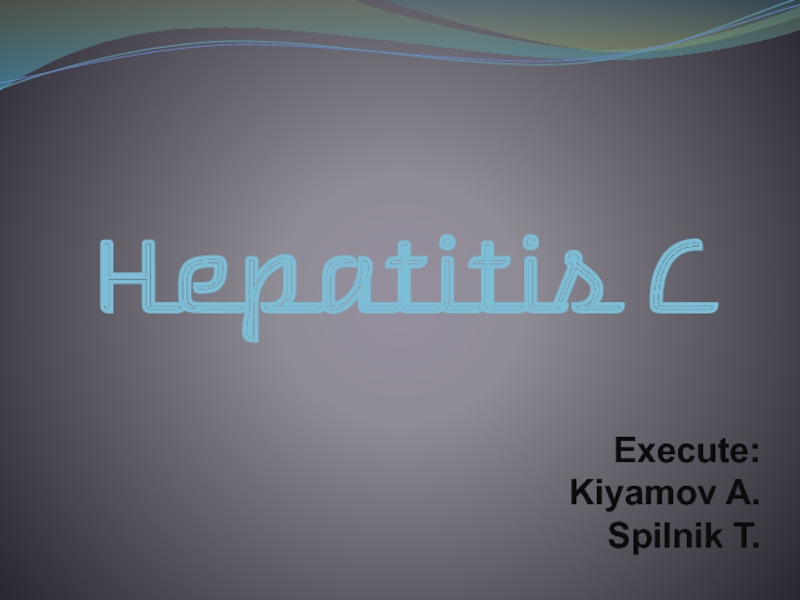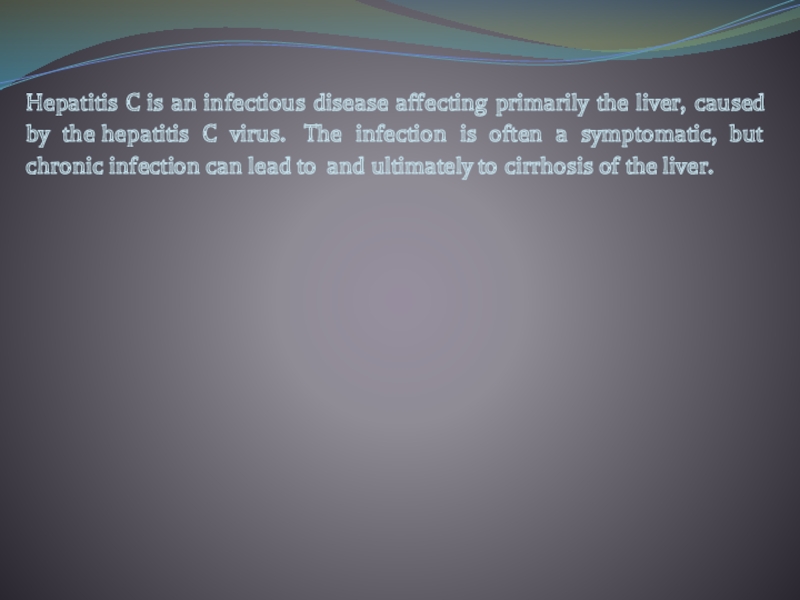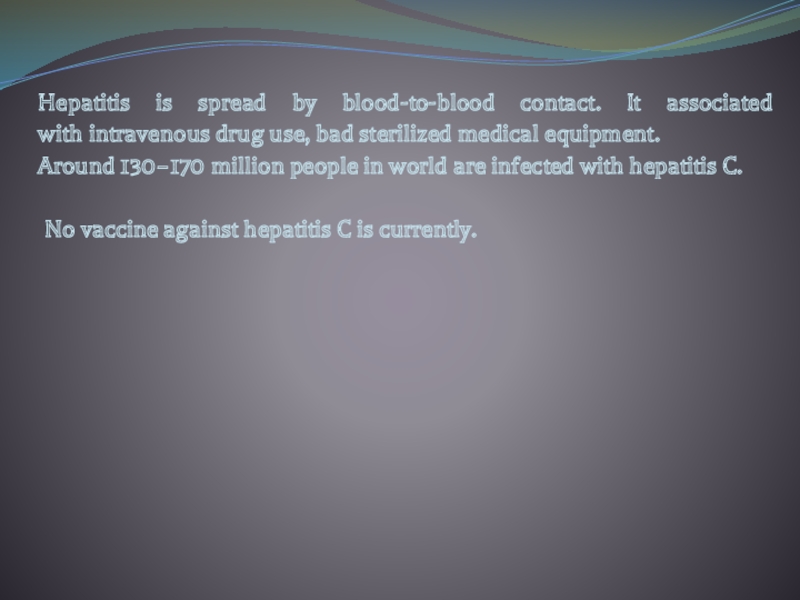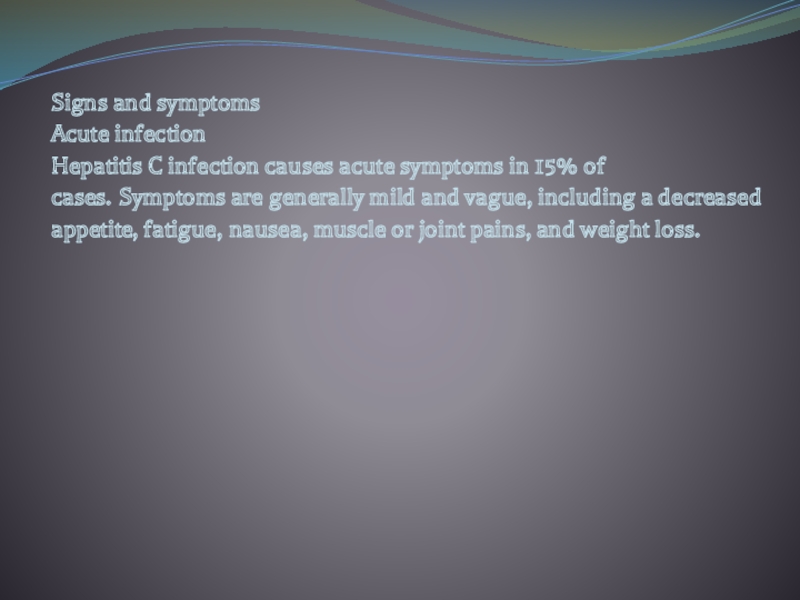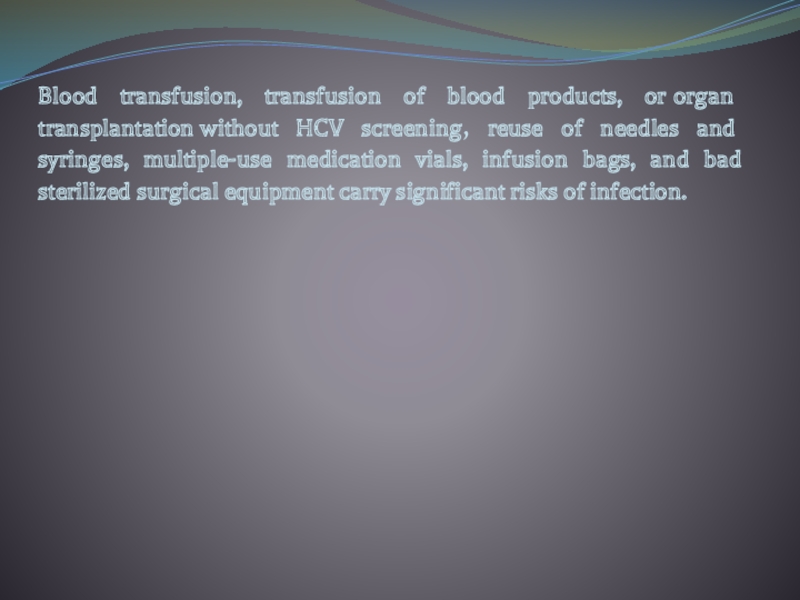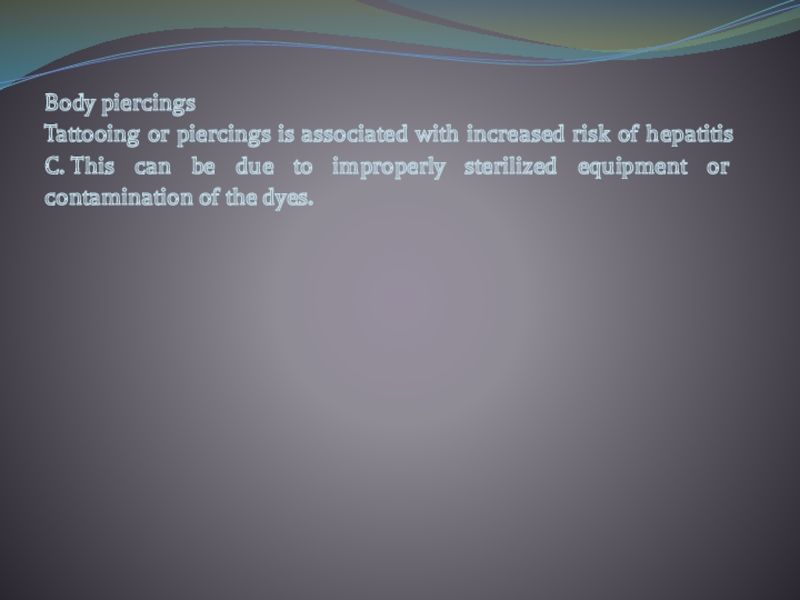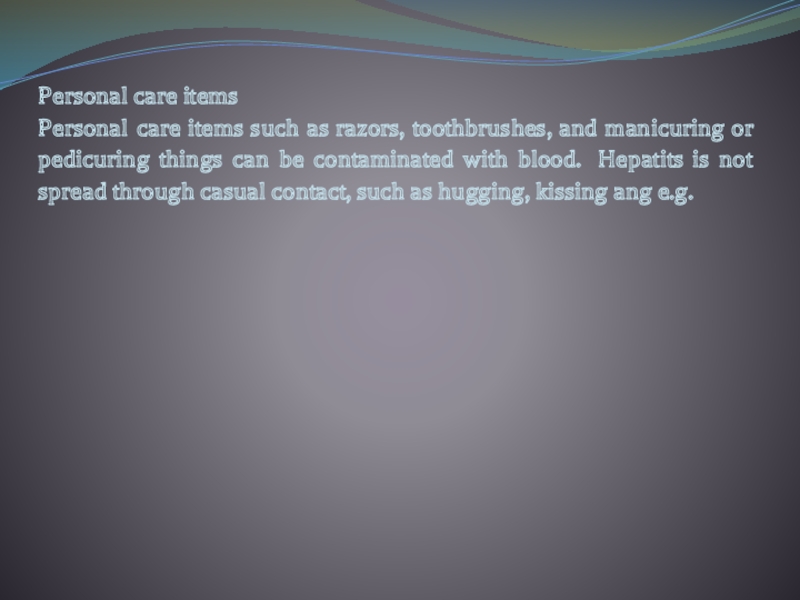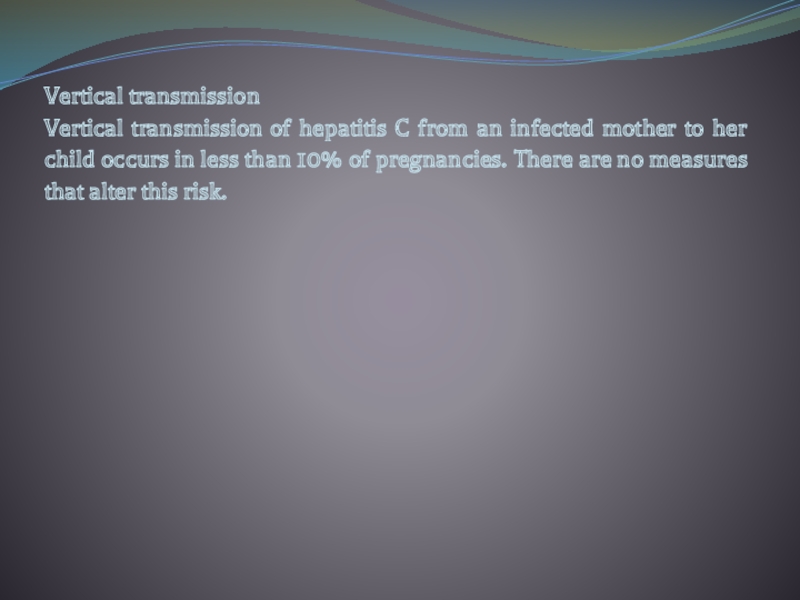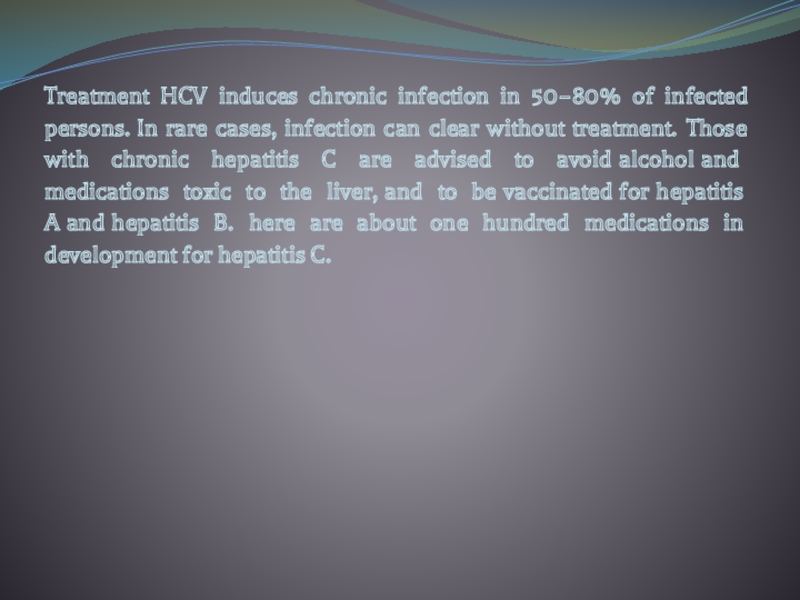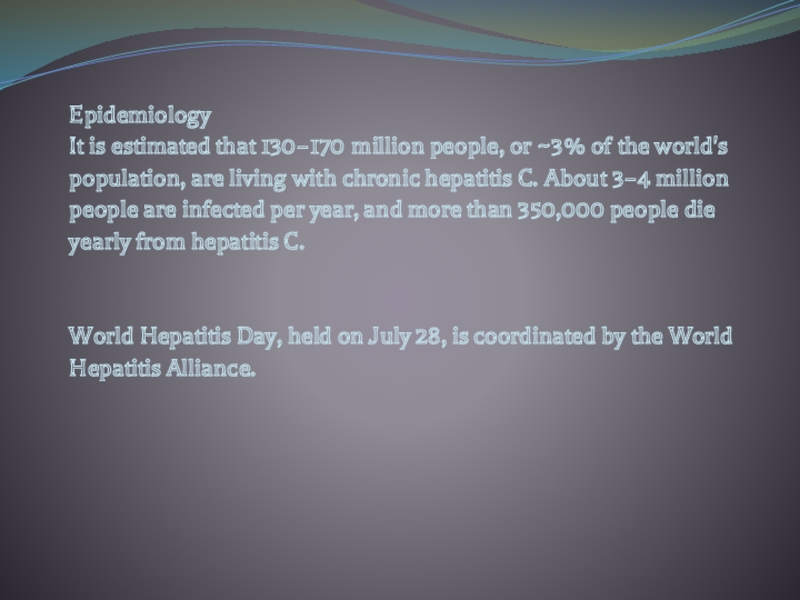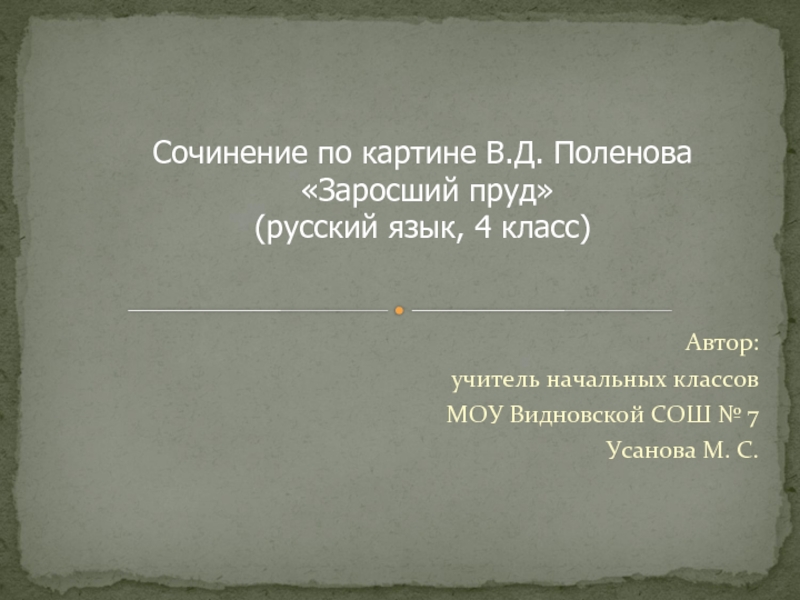Разделы презентаций
- Разное
- Английский язык
- Астрономия
- Алгебра
- Биология
- География
- Геометрия
- Детские презентации
- Информатика
- История
- Литература
- Математика
- Медицина
- Менеджмент
- Музыка
- МХК
- Немецкий язык
- ОБЖ
- Обществознание
- Окружающий мир
- Педагогика
- Русский язык
- Технология
- Физика
- Философия
- Химия
- Шаблоны, картинки для презентаций
- Экология
- Экономика
- Юриспруденция
Hepatitis C
Содержание
- 1. Hepatitis C
- 2. Hepatitis C is an infectious disease affecting primarily the liver, caused
- 3. Hepatitis is spread by blood-to-blood contact. It
- 4. Signs and symptomsAcute infectionHepatitis C infection causes
- 5. Chronic infectionAbout 80% of those exposed to
- 6. TransmissionThe primary methods of transmission in the developed
- 7. Intravenous drug usePrevalences of hepatitis C in
- 8. Blood transfusion, transfusion of blood products, or organ
- 9. Body piercingsTattooing or piercings is associated with increased
- 10. Personal care itemsPersonal care items such as
- 11. Vertical transmissionVertical transmission of hepatitis C from an
- 12. DiagnosisThere are a number of diagnostic tests
- 13. Treatment HCV induces chronic infection in 50–80%
- 14. EpidemiologyIt is estimated that 130–170 million people, or
- 15. Слайд 15
- 16. Скачать презентанцию
Hepatitis C is an infectious disease affecting primarily the liver, caused by the hepatitis C virus. The infection is often a symptomatic, but chronic infection can lead to and ultimately to cirrhosis of the liver.
Слайды и текст этой презентации
Слайд 2Hepatitis C is an infectious disease affecting primarily the liver, caused by the hepatitis C
Слайд 3Hepatitis is spread by blood-to-blood contact. It associated with intravenous drug
use, bad sterilized medical equipment.
Around 130–170 million people in world are
infected with hepatitis C.No vaccine against hepatitis C is currently.
Слайд 4Signs and symptoms
Acute infection
Hepatitis C infection causes acute symptoms in
15% of cases. Symptoms are generally mild and vague, including a
decreased appetite, fatigue, nausea, muscle or joint pains, and weight loss.Слайд 5Chronic infection
About 80% of those exposed to the virus develop
a chronic infection.
Hepatitis C after many years becomes the primary
cause of cirrhosis and liver cancer. Liver cirrhosis may lead to portal hypertension, ascites , varices, jaundice, and hepatic encephalopathy.
Слайд 6Transmission
The primary methods of transmission in the developed world is intravenous drug use,
while in the developing world the main methods are blood transfusions and unsafe medical
procedures. The cause of transmission remains unknown in 20% of cases.Слайд 7Intravenous drug use
Prevalences of hepatitis C in the intravenous drug
user population of between 60% and 80%.
Слайд 8Blood transfusion, transfusion of blood products, or organ transplantation without HCV screening,
reuse of needles and syringes, multiple-use medication vials, infusion bags,
and bad sterilized surgical equipment carry significant risks of infection.Слайд 9Body piercings
Tattooing or piercings is associated with increased risk of hepatitis
C. This can be due to improperly sterilized equipment or contamination
of the dyes.Слайд 10Personal care items
Personal care items such as razors, toothbrushes, and
manicuring or pedicuring things can be contaminated with blood. Hepatits
is not spread through casual contact, such as hugging, kissing ang e.g.Слайд 11Vertical transmission
Vertical transmission of hepatitis C from an infected mother to
her child occurs in less than 10% of pregnancies. There
are no measures that alter this risk.Слайд 12Diagnosis
There are a number of diagnostic tests for hepatitis C
including
Liver biopsies are used to determine the degree of liver damage
presentThere are a blood tests that try to determine the degree of hepatic fibrosis.
Слайд 13Treatment HCV induces chronic infection in 50–80% of infected persons. In
rare cases, infection can clear without treatment. Those with chronic
hepatitis C are advised to avoid alcohol and medications toxic to the liver, and to be vaccinated for hepatitis A and hepatitis B. here are about one hundred medications in development for hepatitis C.Слайд 14Epidemiology
It is estimated that 130–170 million people, or ~3% of the
world's population, are living with chronic hepatitis C. About 3–4 million
people are infected per year, and more than 350,000 people die yearly from hepatitis C.World Hepatitis Day, held on July 28, is coordinated by the World Hepatitis Alliance.
